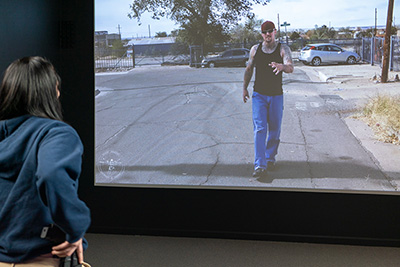
As a gun owner, it's the one decision you hope you never have to make: to shoot or not to shoot. According to scientific research, your brain takes about 13 milliseconds to process an event, which means you have about two seconds or less to make the right call in a potentially deadly incident.
If this scenario doesn't scare you, it's probably because you have had thorough self-defense training and gun safety classes to help you quickly and effectively make shoot/don't shoot decisions.
If this scenario scares you, as a gun owner, it's your responsibility to further your situational awareness training and gain the confidence necessary to protect yourself, your loved ones, and your personal property in a dangerous situation.
Everyone's Brain Works Differently
The most important thing to understand when it comes to situational training is that every person will react differently to the same situation. So the complication in shoot/don't shoot scenarios is that not only do you have to make a personal, difficult decision that affects the lives of all those involved, but you have to do it at a speed that might alter your perception of a situation.
During stressful scenarios, your body's natural "fight or flight" survival reflex will kick in. Unfortunately, this means your fine motor skills will be diminished, and often you might experience tunnel vision, shaking numbness, or a pounding heart. So with these physical changes, how are you supposed to make a sound, logical judgment call?
That is why advanced training is critical for first-time and long-term gun owners. Nothing will ever beat hands-on training. Frequent and routine practice is vital.
If you plan to carry as a civilian, you accept the possibility that you will, at some point, encounter a deadly situation that requires your quick and logical judgment. For responsible gun owners, it is vital to practice the following skills regularly:
- Shoot/Don't Shoot judgment calls
- Marksmanship
- Drawing from concealment
- Muscle memory
- Mitigation techniques
- Safe gun handling
Virtual situational awareness training classes allow shooters to play out lifelike scenarios in a safe, supportive, and educational environment. This is the only way to go back and dissect what could and should be done differently if the situation ever arises in real life. You don't get a do-over when it happens in the real world.
While fixed target practice is essential to gaining valuable muscle memory and marksmanship skills, there is nothing like engaging in simulated shoot/don't shoot situational training exercises to get a natural feel for making critical decisions, pulling from concealment, and practicing mitigation techniques.
Ultimately, shooters must learn to quickly and accurately assess:
- If there is or isn't actual danger and fear in their life or the lives of others
- If they feel a need to defend themselves or others immediately
- If they can take reasonable and appropriate action to defend the situation
When you practice these life-saving skills in an educational environment, you can build the confidence necessary to make the right decision every time. And ultimately, that is one of the core responsibilities of gun owners.
At EVR, we take firearms safety and training seriously. Our goal is to provide training that builds upon the skills learned in traditional CCW classes through hands-on virtual training in various shoot/don't shoot training drills. Our Carry With Confidence Training Series is the next logical step for CCW license holders to develop the skills and confidence to react effectively in dangerous or life-threatening situations.
We encourage you to learn more about our Carry With Confidence Training and decide if situational awareness training is the right next step in your journey as a responsible gun owner.